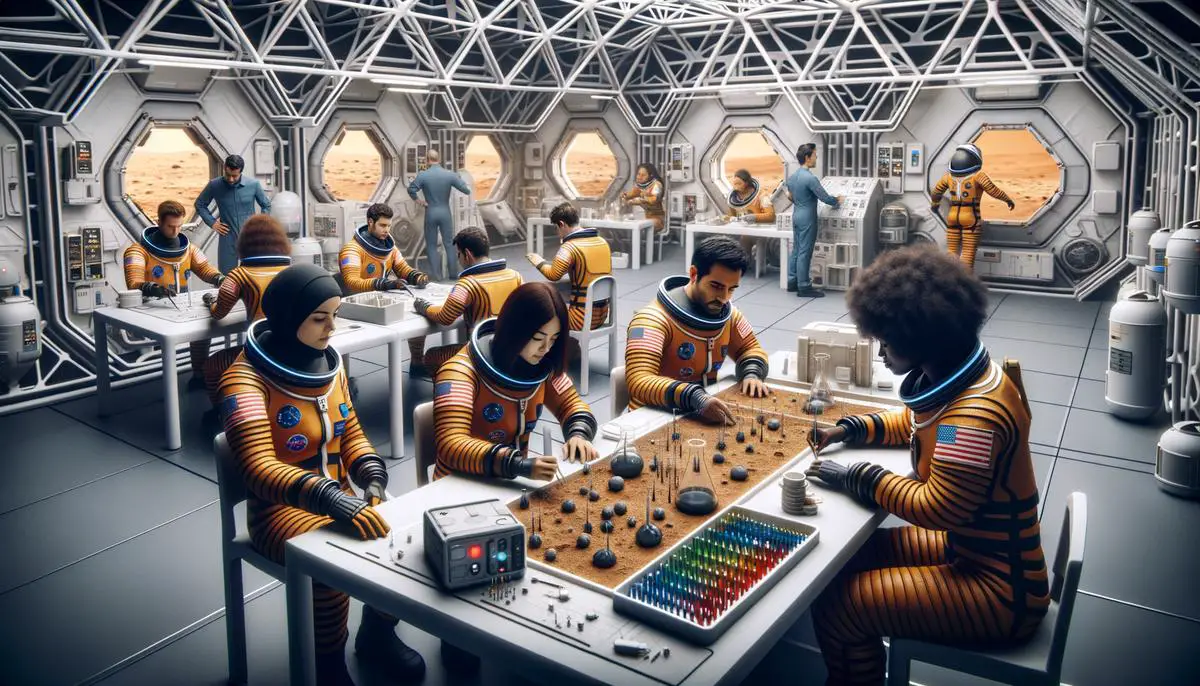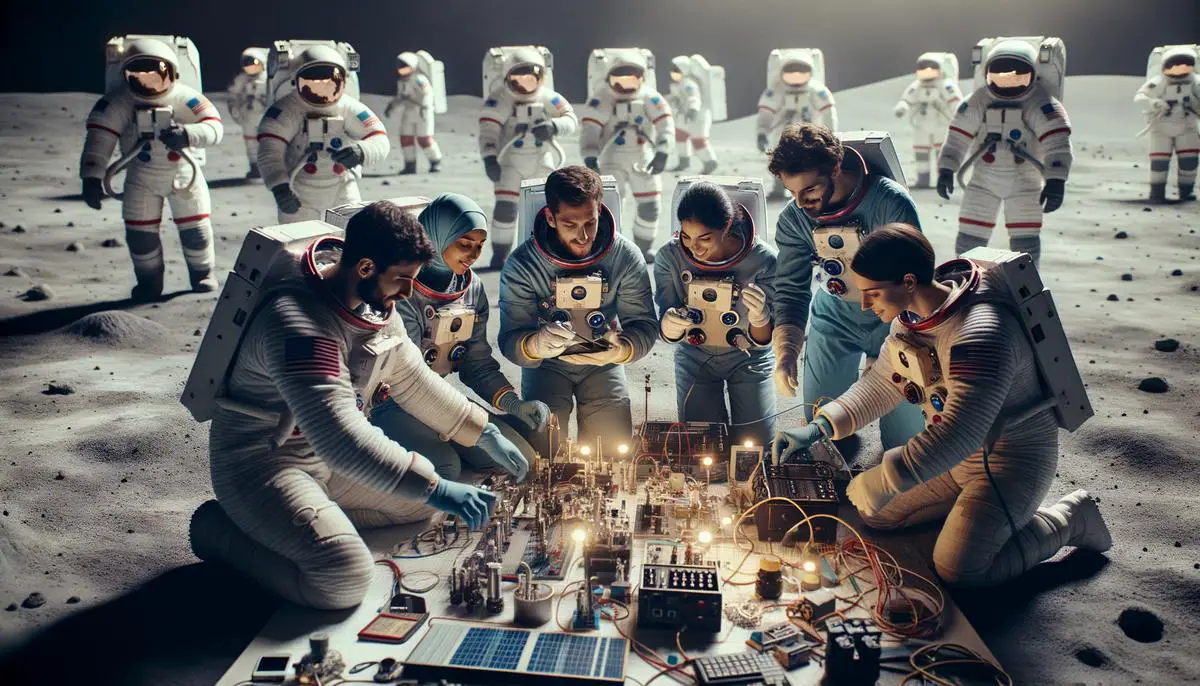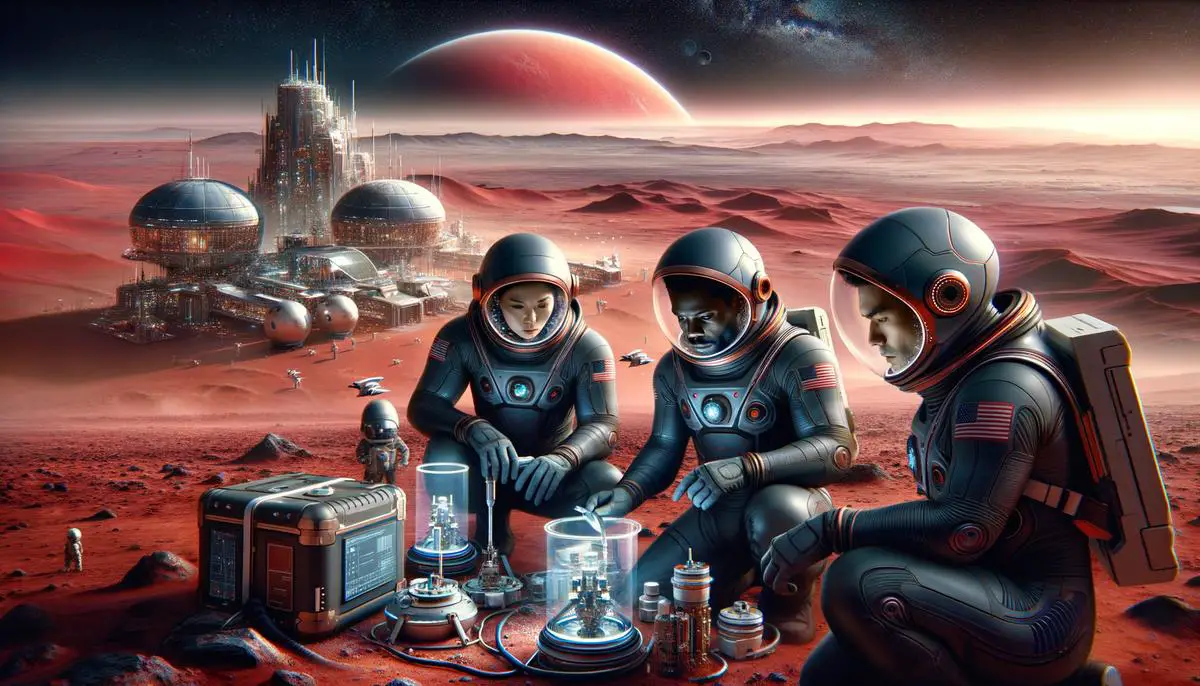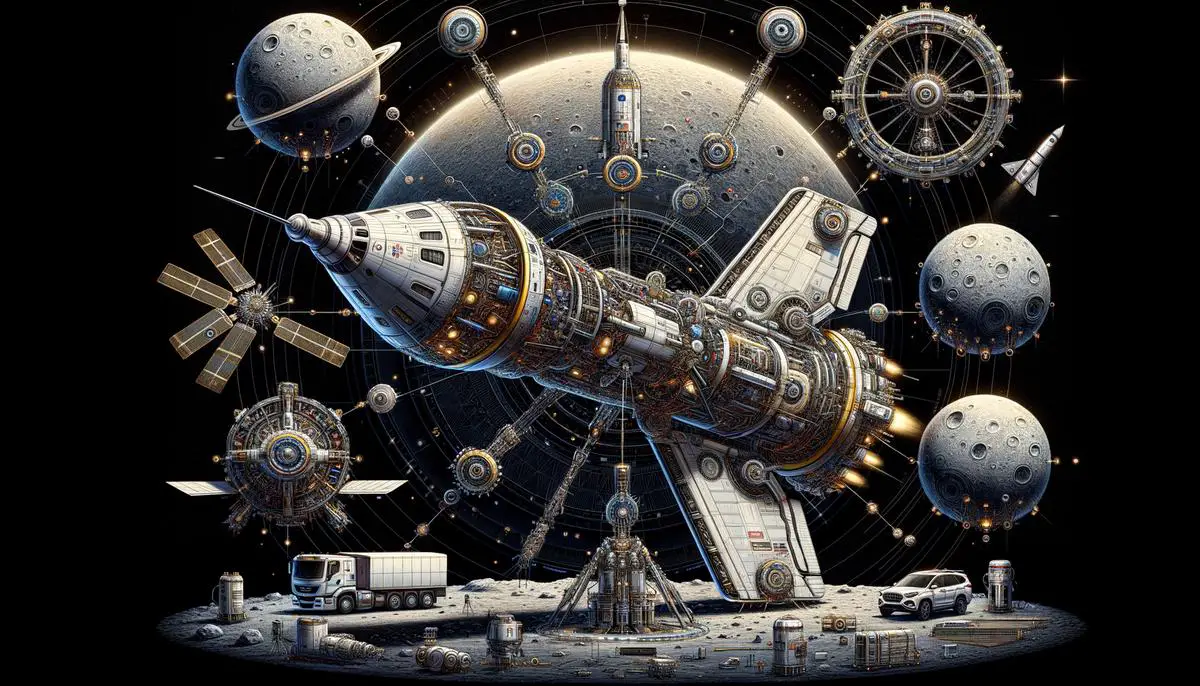Embark on a cosmic journey where yesterday's science fiction steadily becomes today's scientific reality. The path ahead explores humanity's ambitious strides toward reaching distant celestial bodies, particularly the moon and Mars. It's a story of technological advancements, psychological resilience, and global cooperation, all striving to expand the boundaries of human space travel.
Contents
Artemis Program Overview
NASA's Artemis program aims to return humans to the moon for the first time in decades, including the first woman and person of color on the lunar surface. Artemis builds upon the legacy of Apollo, with the goal of making moon visits routine and laying the groundwork for human missions to Mars.
Advanced technology is central to Artemis. The Space Launch System (SLS) provides the power to propel the Orion spacecraft and its crew out of Earth's orbit toward the moon. Orion, designed for deep space, is where astronauts will live and work during their journey. Its design ensures safety during re-entry into Earth's atmosphere, integrating decades of space travel knowledge.
The Lunar Gateway, a planned space station orbiting the moon, will serve as a waypoint for astronauts, facilitating easier access to the lunar surface and eventually Mars. Lunar landers will transport astronauts between the Gateway and the moon's surface.
Establishing a sustainable human presence on the moon could serve as a stepping stone to further exploration, including Mars. Developing infrastructure like habitats and vehicles allows for testing survival techniques without being too far from Earth – a practice run for life on Mars.
Artemis represents the next generation of exploration, highlighting NASA's commitment to extending humanity's reach further into space. It's a collaboration of international space agencies, each contributing their expertise, opening the door to deep space and paving the way to Mars and beyond.

Challenges of Deep Space Exploration
Exploring the harsh environment of deep space, especially with NASA's Artemis program, presents unique challenges – technical, psychological, and logistical.
The technical challenges are significant. Everything sent into space must function flawlessly, from propulsion and life support systems to habitats that withstand extreme temperatures and radiation. Communication delays pose another obstacle; a message from Mars could take up to 22 minutes to reach Earth.
The psychological challenges arise from isolation and confinement. Crews must navigate group dynamics while separated from loved ones, adapt to limited space cuisine, and handle the responsibility of representing humanity on another celestial body.
Logistical challenges require detailed planning. Every ounce sent to space is valuable, and sustainability is crucial. Utilizing local resources like lunar water ice for fuel, air, and building materials becomes essential. Launch windows are limited, and every mission is a complex interplay of timing, physics, and economics.
Deep space exploration combines human endeavor, technological prowess, and ambitious goals. As we address these challenges, we redefine what's possible. Through Artemis and future missions, we embark on a journey not only through space but also into the depths of human ingenuity and perseverance.

Simulating Mars Conditions
NASA's CHAPEA (Crew Health and Performance Exploration Analog) is an ambitious attempt to simulate Mars' conditions right here on Earth. Housed within a 3D-printed habitat designed to mimic Martian architecture, the CHAPEA crew embarks on a year-long journey, simulating Mars' isolation, confinement, and remote conditions.
The objectives are layered, aiming to study astronaut behavior, social dynamics, and the impact of prolonged isolation. Incorporating delayed communication and monitoring physical and mental health, the methodology tests the crew's resilience, teamwork, and ability to improvise with limited resources.
NASA scientists monitor everything, from emotional toll to sleep quality under artificial sunsets. The findings from these Earth-based capsules of Martian life are crucial for crafting sustainable living practices for space travelers.
CHAPEA's importance cannot be overstated. It's a dress rehearsal for the real deal, providing insight into the human aspect of space travel that no robot rover could. These simulations craft a blueprint for life on a different world, underscoring that understanding how to keep astronauts healthy, happy, and sane is just as critical as ensuring they have enough oxygen to breathe.
While we might still be a significant distance from setting foot on Mars, efforts like NASA's CHAPEA simulation are paving the way. Before we can dream of leaving footprints on Martian soil, we must first understand the environment we're planning to explore – even if that means creating a bit of Mars in our own backyard.

Role of the Lunar Colony
Before humanity takes its first steps onto the Martian surface, we have a proving ground closer to home – our Moon. The lunar colony serves as a rigorous training ground for Mars missions, where astronauts will learn how to live and work in preparation for the journey to Mars.
The Moon offers a more accessible environment for testing technologies crucial for Mars expeditions. Rovers, drills, and habitats can be tested in the harsh lunar conditions. If a device can withstand the Moon's challenges, it has a good chance of performing well on Mars.
The lunar colony also serves as a live testing laboratory for life support systems:
- Recycling water
- Growing food
- Ensuring breathable air
These can all be refined on the Moon before venturing to Mars.
Moon missions provide hands-on experience with the realities of living away from Earth – maintaining physical and mental health, ensuring efficient teamwork in isolated environments, and managing resources. These experiences provide valuable lessons for Mars missions.
The lunar colony is a course in self-reliance, simulating the delayed response times expected on Mars and encouraging astronauts to be self-sufficient. Crews must become versatile, fixing machinery, conducting research, and solving problems independently.
Finally, establishing a presence on the Moon allows us to unlock its secrets, many of which could have counterparts on Mars. From studying lunar water ice to investigating geological features, the Moon offers valuable knowledge that can inform our exploration of the Red Planet.
The lunar colony lays the foundation for humanity's journey to Mars, providing the tools, experience, and knowledge needed to venture further into space. By honing our space survival skills on the Moon, humanity moves closer to expanding its reach and thriving on Mars.

Future of Human Space Exploration
As the Artemis missions conclude, one can't help but wonder, "What's next for human space exploration?" With Mars on the horizon and the stars holding countless mysteries, the future of space exploration is both exciting and challenging.
First up, the primary goal of human space ambition: Mars. With Artemis serving as a vital stepping stone, the journey to Mars is not just a possibility—it's an inevitability. Imagine the first astronauts setting foot on this alien world, armed with knowledge gained from lunar experiences. But Mars isn't just another destination; it presents a whole new set of challenges.
Technological advancements will be necessary, from habitats capable of withstanding Martian dust storms to advanced rovers. Psychological resilience will be tested as crews face isolation against the backdrop of Mars' barren landscape. Sourcing water and breathable air will require innovative technologies for ice mining and carbon dioxide conversion.
Timelines for reaching Mars vary widely, as the interplay between ambition and reality is complex. Optimistic projections aim for the 2030s, but assumptions need adjusting based on technological progress, funding, and international cooperation.
While Mars captures the imagination, it's just one destination in humanity's cosmic journey. The potential for exploring Venus' cloud cities, Europa's subsurface oceans, or Titan's methane rivers holds untold possibilities for future generations. Building upon lessons from Artemis and Mars missions, we can envision humans as deep-space explorers, embracing solar system exploration with confidence.
Achieving these space exploration goals requires advancements in propulsion technology, quantum communication, and AI assistants. As our presence in space grows, so does the need for ethical considerations, including:
- Planetary protection
- Management of space resources
- The possibility of encountering extraterrestrial life
Earth remains the foundation from which we reach outward. Global collaboration is essential. The International Space Station set the stage; Artemis, Mars, and future missions will solidify a unified human effort in the vast expanse of space.
The future of human space exploration will be shaped by human determination. The path forward after Artemis balances aspirations with the challenges of the unknown. Yet, one thing is clear: humanity stands on the edge of becoming a space-faring civilization. The Artemis mission – to explore, to learn, to return and reach further – is our call to action across the cosmos.
From Mars and beyond, each challenge overcome speaks to our boundless potential. From lunar foundations, we strive not just to visit the stars but to make them a part of our ongoing story of exploration and discovery.

- NASA. Artemis Program. NASA. Accessed June 10, 2023.
- Hambleton K, Williams D, Mackay S, et al. Simulated Isolation and Confinement in Antarctica and Space: Implications for Mental Health. Front Psychol. 2021;12:703738. doi:10.3389/fpsyg.2021.703738
- Jaumann R, Hiesinger H, Anand M, et al. Geology, geochemistry, and geophysics of the Moon: Status of current understanding. Planetary and Space Science. 2012;74(1):15-41. doi:10.1016/j.pss.2012.08.019
